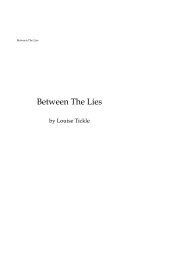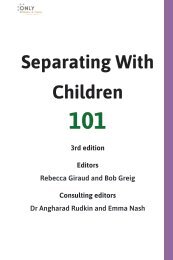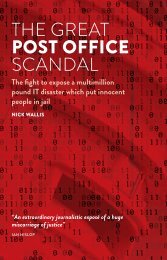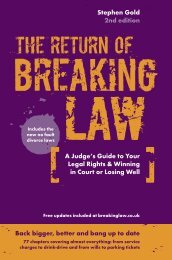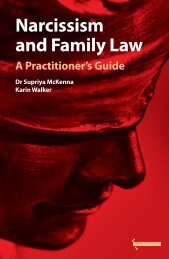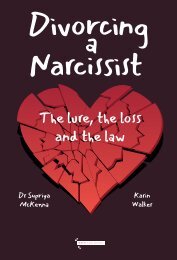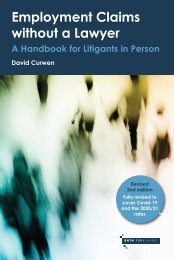Insolvency Made Clear: A Guide for Debtors
Plain English, practical guidance for anyone facing demands over a debt they are struggling to pay.
Plain English, practical guidance for anyone facing demands over a debt they are struggling to pay.
You also want an ePaper? Increase the reach of your titles
YUMPU automatically turns print PDFs into web optimized ePapers that Google loves.
Effect Of Bankruptcy<br />
either voluntarily with written agreement of the bankrupt and the Trustee/OR,<br />
or by order of the court (s310A(6)).<br />
2.14 Distribution to creditors<br />
Once the Trustee has gathered funds, they will then make a distribution to creditors.<br />
The distribution must follow the statutory regime, which in outline is:<br />
• First, secured creditors will be paid. This includes mortgages, which are<br />
loans secured on the house. If the sale of the security does not cover the<br />
whole amount owed to the creditor, the remaining part is treated like an<br />
unsecured debt.<br />
• Second, bankruptcy expenses of the Trustee in Bankruptcy (see r10.149).<br />
This includes the Trustee’s fees; any expenses they spent on contesting debts;<br />
the costs of running the bankrupt’s business if the Trustee chooses to do<br />
so; and the costs of the petitioner’s petition which the court allowed. The<br />
significance of this, from the bankrupt’s perspective, is that the Trustee<br />
is likely to be relatively assured of having their fees paid and so, unlike<br />
unsecured creditors, is unlikely to be put off from lengthy negotiation and<br />
correspondence.<br />
• Third, preferential debts, which typically refers to unpaid wages, redundancy<br />
pay if the bankrupt had employees and certain taxes to HMRC.<br />
• Fourth, ordinary unsecured creditors.<br />
• Fifth, interest on any debt, which will accrue at 8% since the date of the<br />
bankruptcy order.<br />
• Sixth, debts to the bankrupt’s spouse.<br />
• Finally, any surplus remaining will go to the bankrupt themselves.<br />
If there is not enough to pay all the debts in the category, the amount which<br />
remains will be divided equally within the category. For example, if the estate<br />
is worth £10,000, the Trustee’s expenses come to £5,000, there are no preferential<br />
debts and there are unsecured debts of £50,000, the Trustee would be paid<br />
in full, and the unsecured creditors would each share the remaining £5,000:<br />
i.e. <strong>for</strong> each £1 of debt they are owed, they would receive 10p. A Trustee may<br />
discover that the individual has so few assets that it is not worth making a distribution<br />
at all.<br />
A bankrupt may have borrowed money from their own family. Family members<br />
will be treated as unsecured creditors – in particular, the family members<br />
33



